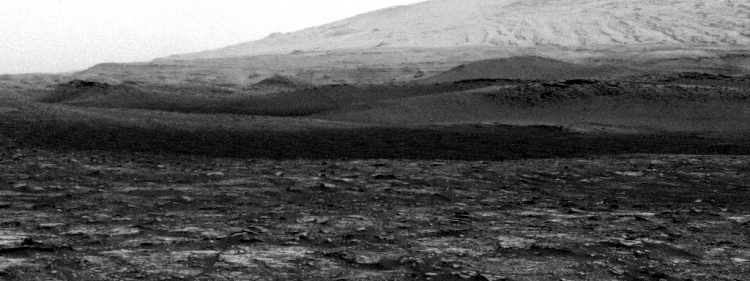Talk:Atmosphere of Mars
| This is the talk page for discussing improvements to the Atmosphere of Mars article. This is not a forum for general discussion of the article's subject. |
Article policies
|
| Find sources: Google (books · news · scholar · free images · WP refs) · FENS · JSTOR · TWL |
| Archives: 1Auto-archiving period: 30 days |
| This It is of interest to the following WikiProjects: | |||||||||||||||||||||||||||||||||
| |||||||||||||||||||||||||||||||||
Proposed merge of Climate of Mars into Atmosphere of Mars
[edit]wide overlap fgnievinski (talk) 04:32, 6 October 2022 (UTC)
- Oppose. There is not "wide overlap". Sure, there is some overlap, but considering the length of both articles, and the amount of unique content in each, merging the articles would simply make one of the articles far too long. aaronneallucas (talk) 01:28, 2 January 2023 (UTC)
- Oppose While there is some overlap in the topic of the atmosphere, the climate-related article contains a lot of information that isn't directly related to the atmosphere. Joyous! | Talk 18:12, 27 February 2023 (UTC)
- Closing, given the uncontested objections and no support. Klbrain (talk) 10:20, 30 April 2023 (UTC)
Wiki Education assignment: SPAC 5413 - Planetary Geology
[edit]![]() This article was the subject of a Wiki Education Foundation-supported course assignment, between 17 January 2023 and 13 May 2023. Further details are available on the course page. Student editor(s): Alec Fitting (article contribs).
This article was the subject of a Wiki Education Foundation-supported course assignment, between 17 January 2023 and 13 May 2023. Further details are available on the course page. Student editor(s): Alec Fitting (article contribs).
— Assignment last updated by Alec Fitting (talk) 17:24, 9 May 2023 (UTC)
Featured picture scheduled for POTD
[edit]Hello! This is to let editors know that File:PIA24039-MarsCuriosityRover-DustDevil-20200809.gif, a featured picture used in this article, has been selected as the English Wikipedia's picture of the day (POTD) for July 12, 2023. A preview of the POTD is displayed below and can be edited at Template:POTD/2023-07-12. For the greater benefit of readers, any potential improvements or maintenance that could benefit the quality of this article should be done before its scheduled appearance on the Main Page. If you have any concerns, please place a message at Wikipedia talk:Picture of the day. Thank you! — Amakuru (talk) 09:23, 5 July 2023 (UTC)

|
|
The atmosphere of Mars is a layer of gases surrounding Mars, which is composed primarily of carbon dioxide (95%), along with molecular nitrogen (2.8%), and argon (2%) and trace levels of other compounds. The Martian atmosphere is much thinner than Earth's, its average surface pressure of 610 pascals (0.088 psi) being less than 1% of the Earth's value. This prohibits the existence of liquid water on the surface of Mars, but many studies suggest that the Martian atmosphere was much thicker in the past. The effective temperature at the surface is around 210 K (−63 °C; −82 °F), and it has a large daily temperature range due to the low thermal inertia; in some regions it can vary from −75 °C (−103 °F) to near 0 °C (32 °F). Dust devils and dust storms are prevalent on Mars, which are sometimes observable by telescopes from Earth, and can threaten the operation of Mars rovers. Planet-encircling dust storms occur on average every 5.5 Earth years (3 Martian years), but the mechanism responsible for these storms is not well understood. This small dust devil was captured by NASA's Curiosity rover in 2020. Animation credit: NASA / JPL-Caltech / Space Studies Institute
Recently featured:
|
carbon dioxide vs water
[edit]i took out a sentence saying water vapor would make Mars warmer, and t hen self-reverted. CO2 is much more powerful than water vapor, and at global warming potential we say water may even be negative. but it seems the relationship isnt proportional to total amt in atmosphere, so i self-reverted. i will try to look into this if i get a chance.—Soap— 23:05, 2 August 2023 (UTC)
- B-Class level-5 vital articles
- Wikipedia level-5 vital articles in Physical sciences
- B-Class vital articles in Physical sciences
- B-Class Astronomy articles
- Mid-importance Astronomy articles
- B-Class Astronomy articles of Mid-importance
- B-Class Mars articles
- Top-importance Mars articles
- Mars task force articles
- B-Class Solar System articles
- Top-importance Solar System articles
- Solar System task force
- B-Class Weather articles
- Mid-importance Weather articles
- B-Class General meteorology articles
- Mid-importance General meteorology articles
- B-Class Space weather articles
- Mid-importance Space weather articles
- WikiProject Weather articles






